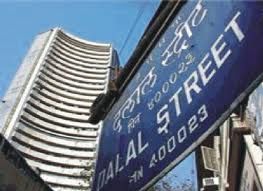 With volatility in the stock markets rising higher, one class of mutual funds -- arbitrage funds -- is doing really well.
With volatility in the stock markets rising higher, one class of mutual funds -- arbitrage funds -- is doing really well.
In the past one year, the National Stock Exchange’s volatility index is up 28 per cent. Arbitrage funds have returned slightly over nine per cent in the same period.
In comparison, the BSE Sensex returned around eight per cent and Nifty 5.50 per cent.
Arbitrage funds look for opportunity when there is a difference in prices of an asset between two or more markets.
For example, there could be a difference between a stock’s price on BSE versus NSE, or a difference in prices of an asset in the spot (cash) market and the futures (derivatives) market, or a difference between this month’s future contract and the next month’s future contract.
If the difference is big, thanks to rising volatility, arbitrage funds can make better returns.
Between December 7, 2012 and till date, the Sensex has moved in the range of 19,424.10 and 21,326.42; Nifty has moved between 5,907.40 and 6,415.
While the markets remained volatile for most part of the past year, in the past couple of months they have done well.
The Sensex gained 19 per cent from its year-low of 17905.91 on August 21.
But volatility is on the rise, and going forward, experts say volatility could remain at elevated levels due to big events such as the US taper and central government elections.
Further, interest rates have also been rising, and that is giving rise to more arbitrage opportunities.
Also, mid-cap space is also seeing an increase in volatility, as market participation has been increasing in these counters.
“Arbitrage funds do well when interest rates go up.
“And, at present we are in the high interest rate regime,” said Sankaran Naren, chief investment officer of ICICI Prudential Asset Management Company.
Mid-caps form a significant chunk of an arbitrage fund’s portfolio these days.
For example, nearly 26 per cent of SBI Arbitrage Opportunities’ top equity holding, which forms a little over 50 per cent of the scheme’s portfolio, is in mid-cap stocks.
Birla Sun Life Enhanced Arbitrage holds 24 per cent of its top holding in mid-cap stocks. “When markets rise, arbitrage opportunities increase.
“And in the past one-two months even mid-caps have performed.
“There could be good arbitrage opportunities among emerging large-caps but not in mid-caps.
“Fund managers could be finding value in the former,” said a fund manager from UTI Mutual Fund.
Industry experts said arbitrage funds are good products to invest with a horizon of six months to a year.
But, do not get influenced by the portfolio holding of these schemes.
Because it might change over the next few months.
“Today, mid-caps are being favoured for gains.
“But the strategy might or might not be the same over the next three to six months.
“Therefore, while you could make decent gains from this fund category till the Lok Sabha elections, don’t make decisions based on the portfolio,” added another fund manager.
But since the markets are riding on four crucial elections results over the weekend, mid-caps would also be doing well.
According to Hemant Rustagi of Wiseinvest Advisors, the other advantage of investing in arbitrage funds is that these are more tax-friendly than other equity funds.
“Many of these funds pay dividends, which are tax-free in the hands of the investor.
“If you stay invested for a year, your money will be tax exempt.
“Even if you stay invested for six months, there will be no exit load, as most of these funds levy exit load only up to three months and short-term capital gains will be only 15 per cent,” he said.
This is better than ultra short-term debt funds, where dividends are taxable and short-term capital gains are taxable at slab rate.







